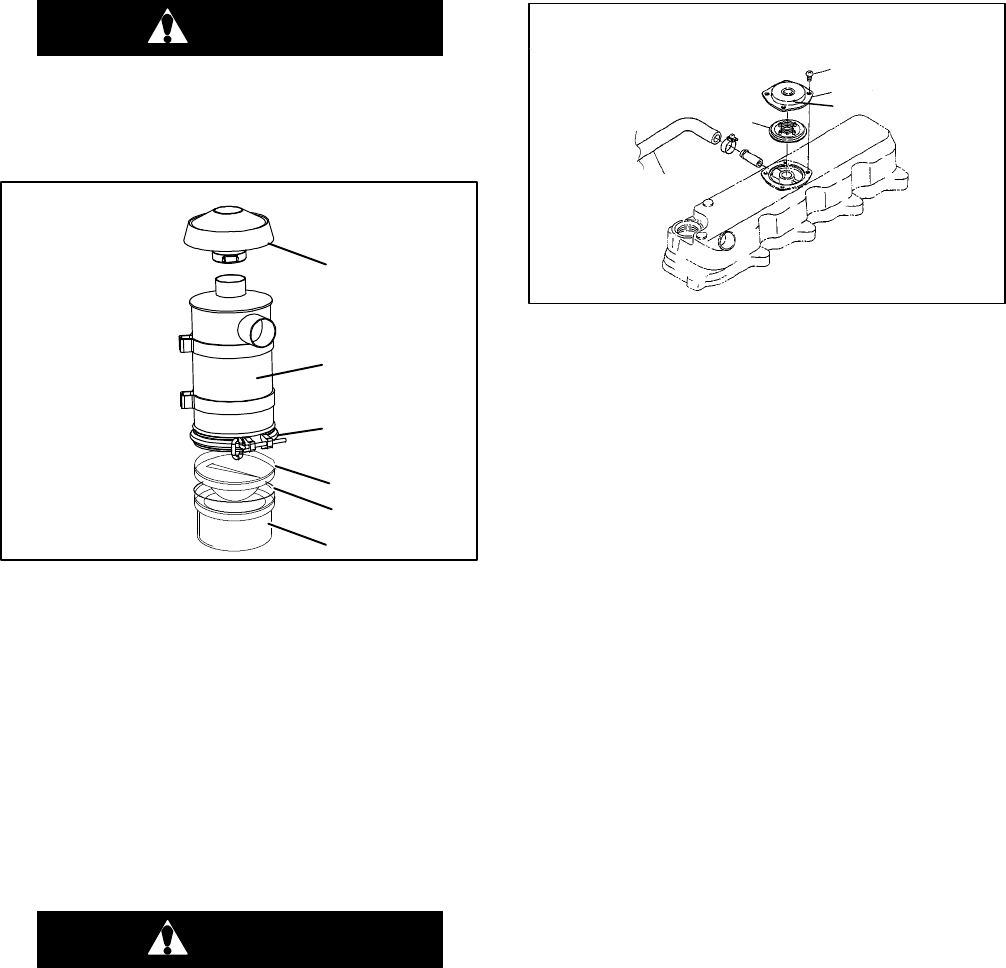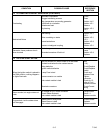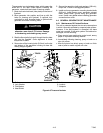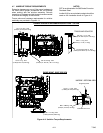
4-- 6T--343
CAUTION
Do not underfill oroverfill theoil bath cups.
Overfilling of cups causes loss of capacity;
underfilling cups causes lack of filtering
efficiency.
1
2
3
4
5
6
1. Air Inlet Hood
2. Air Cleaner Body
3. Cap Clamp
4. Inner Oil Cup
5. Gasket
6. Oil Cup
Figure 4-4 Air Filter (Oil Bath Type)
e. Service - Body Assembly
The lower portion of the air cleaner should be inspected
each time the oil cup is inspected or serviced. If there is
any sign of contaminant buildup or plugging, the body
assembly should be removed and back flushed.
At leastoncea year orat regular engineservice per iods,
remove the entire air cleaner and per form the following:
1. Remove oil cups. Check and clean center tube.
WARNING
Do not use gasoline to clean air cleaner
parts.
2. Pump solvent through the air outlet with sufficient
force andvolumeto produce ahard, even s tream out
of the bottom of the body assembly. Reverse flush
until all foreign material is removed.
4.4.14 Engine Crankcase Breather
The engine uses a closed type breather with the
breather line attached to the cylinder head cover (see
Figure 4-5). It is not necessary to dissemble valve style
elements for cleaning. However , the bleed hole should
be checked to ensure it is free of obstruction. Check
once a year or at every 3,000 hours maintenance
interval, whichever comes first.
1
5
4
3
2
1. Scre
w
2. Breather Cover
3. Bleed Hole
4. Breather
V
alve
5. Breather Tube
Figure 4-5 Engine Crankcase Breather
4.4.15 Servicing Intake Heater
1. Remove harness connection from heater.
2. Remove intake transition mounting hardware.
3. Remove intake transition, heater and both gaskets.
4. Clean old gasket material o f f the transition and
manifold mounting services.
5. Install new heater with a new gasket on either side.
6. Assemble transition to heater and torque mounting
hardware (refer to the engine manual for torque
values).
7. Reconnect harness to heater connection point.
8. Coat stud on heater with protective coating.
4.5 SERVICING THE ALTERNATING CURRENT
GENERATOR
4.5.1 Preventative Maintenance and
Operating Precautions
Costly repairs and down time can usually be prevented
by operating electrical equipment under conditions that
are compatible with those under which the equipment
was designed. Follow the instructions outlined below to
insure maximum efficiency of the electrical equipment.
a. Cooling
Keep all cooling parts clean. DO NOT EXCEED
TEMPERATURE RISE OF 80C (176F) ABOVE A 40C
(104F) AMBIENT. This ensures that the NEMA Class
“F” insulation will not be damaged. DO NOT EXCEED
RATED LOAD except as specified for the equipment.
OPERATE GENERATOR AT RATED SPEED. Failure
to operate generators at rated load or speed will cause
overheating and possible damage to windings due to
over voltage or current.


















